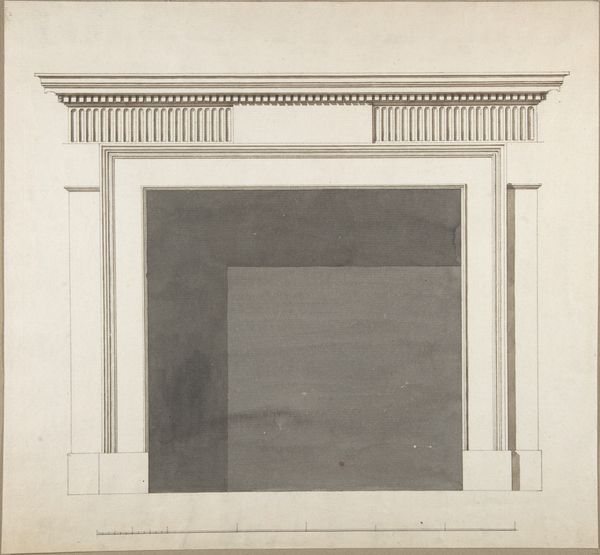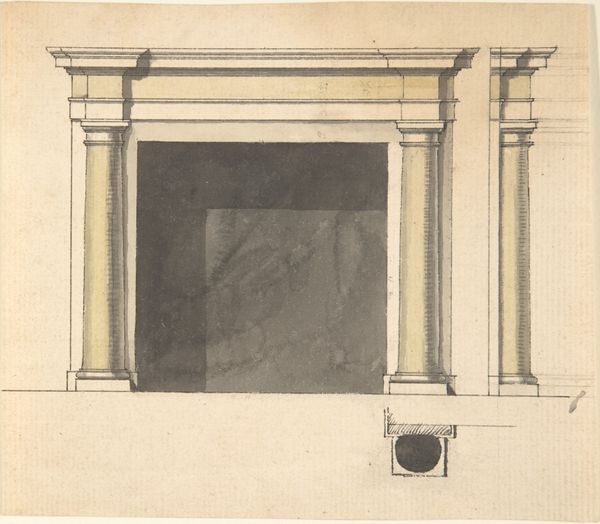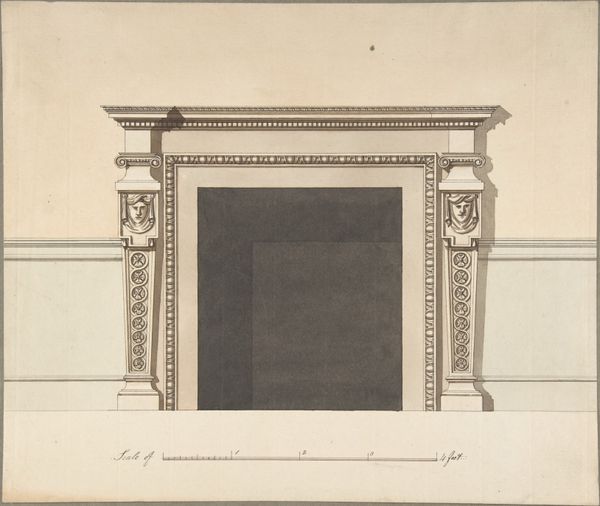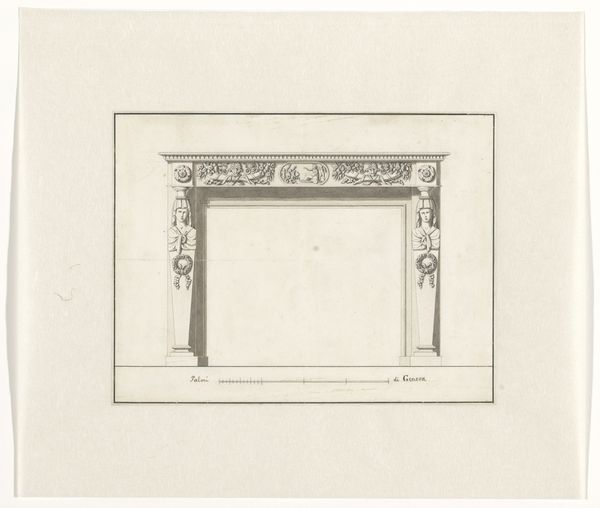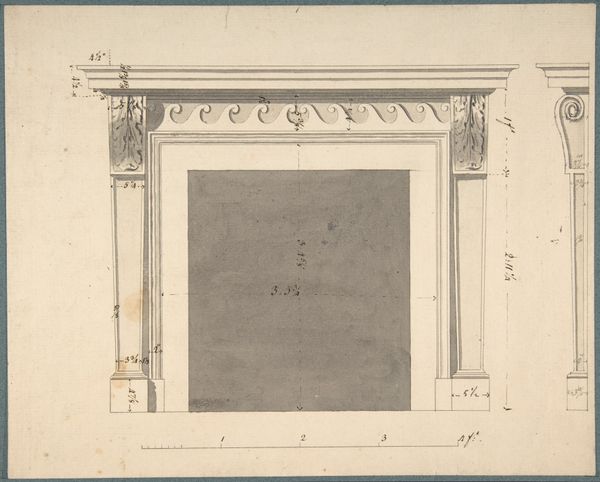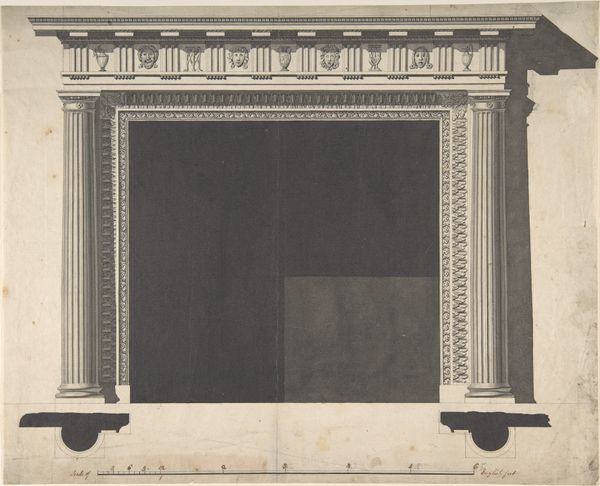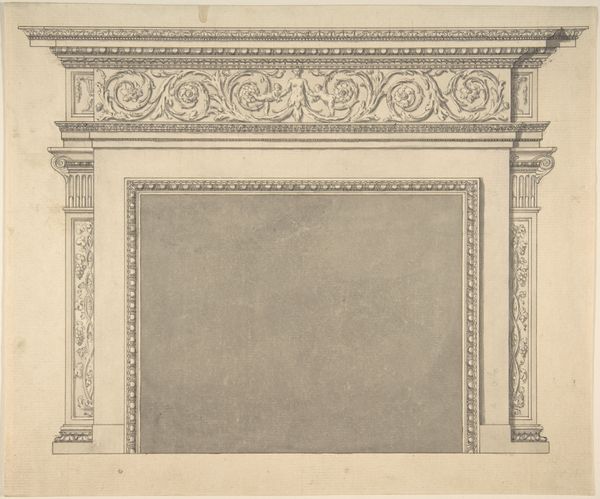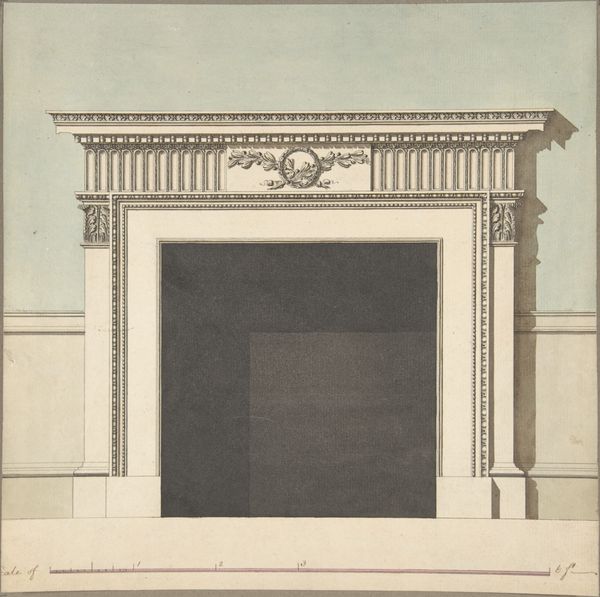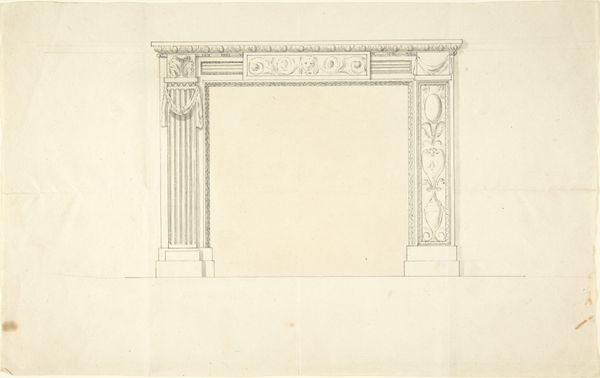
drawing, print, architecture
#
architectural sketch
#
drawing
#
neoclacissism
# print
#
form
#
geometric
#
line
#
academic-art
#
architecture
Dimensions: sheet: 9 1/4 x 10 3/4 in. (23.5 x 27.3 cm)
Copyright: Public Domain
Curator: This drawing, "Design for a Chimneypiece," by John Yenn, dating from about 1770 to 1821, offers a glimpse into Neoclassical architectural aesthetics. It resides in the collection of the Metropolitan Museum of Art. What’s your initial impression? Editor: Stark. Refined, almost severe, actually. The geometric forms create this air of detached elegance, a rather austere visual experience. Curator: Well, let’s think about the materials and processes that went into such a design. The precision of the lines suggests careful drafting, probably with specialized tools. What kind of labor produced those lines? What about the quarrying and shaping of stone required to realize this fireplace in the built environment? The very specific details and their reproduction would’ve hinged on craftsmanship available at the time, signaling the relationship between art and labor. Editor: Precisely, and it's crucial to understand how such designs shaped societal values. Fireplaces, historically, weren’t merely functional, they were focal points reflecting status, taste, and architectural prowess. Notice how the rigid symmetry communicates a specific worldview: order, reason, control. That aesthetic mirrors the sociopolitical currents of the Enlightenment and emerging nationalism. How does that speak to its potential audience? Curator: Indeed. These Neoclassical elements aren't merely decorative, but embedded with political implications and intended to shape the lives of those who lived with them. Look at the production of the print itself. A readily reproducible design, perhaps, to allow it to circulate, democratize its availability while still promoting these same social codes. Editor: Right, this artwork serves as evidence of how design choices translate cultural ideologies into built form, influencing the day-to-day experiences and aesthetics of those in its vicinity. It is about conveying power, but it’s subtle, not overt, as those columns frame the hearth… symbol of home. Curator: The act of placing this object in situ elevates its value to something beyond mere utility, creating both social and symbolic worth through the selection and control of design and materials. Editor: Analyzing it this way adds new appreciation to Yenn's intent, turning what at first seemed just a pretty fireplace design into an intriguing narrative of design, social codes, and political power. Curator: Agreed, examining these works brings their context to life.
Comments
No comments
Be the first to comment and join the conversation on the ultimate creative platform.
